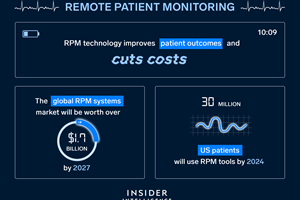Advocates argue that blockchain technology, with its core attributes of decentralization, security, transparency, and immutability, offers promising solutions to some of the challenges facing the U.S. healthcare system. Originally developed for cryptocurrency transactions, blockchain’s potential extends far beyond finance, providing a secure way to manage and share data across distributed networks. This capability is particularly relevant to a healthcare sector burdened by fragmented information systems, data security concerns, and inefficient payment processes.
The U.S. healthcare system faces numerous issues, but one of the most pressing is the management of patient data. Information is often scattered across different providers, sometimes even across states, making continuity of care difficult. Doctors frequently lack access to critical medical histories at crucial moments, which can compromise patient outcomes. This problem is compounded by the astronomical costs of care and insurance, which strain both providers and patients alike.
One of the primary challenges is data fragmentation. Patient information is siloed across various healthcare providers and electronic health record (EHR) systems, making it difficult to access complete medical histories. For example, a single hospital generates around 50 petabytes of healthcare data annually, but much of it remains inaccessible outside its system. Blockchain offers a potential solution by creating a secure, unified ledger that allows authorized providers to access comprehensive patient histories while maintaining stringent privacy controls. This could ensure that critical information is available when needed, improving care coordination and outcomes.
Healthcare organizations also face the challenge of balancing data accessibility with strict privacy regulations like HIPAA. Patient records contain highly sensitive information, and breaches can lead to identity theft and insurance fraud. Blockchain’s cryptographic security features and immutable audit trails can help address these concerns. For example, smart contracts can automate access controls, ensuring that only authorized individuals view patient data while maintaining detailed records of who accessed it. This capability supports regulatory compliance while protecting patient privacy.
The inefficiency of payment systems and claims management is another significant issue. The U.S. healthcare payment process involves multiple intermediaries, leading to slow processing times, high administrative costs, and frequent errors. These delays create additional stress for patients, particularly those dealing with serious health conditions. Blockchain-based smart contracts could automate claims processing and payment verification, reducing administrative burdens and accelerating reimbursements. Real-time claim tracking would also improve transparency for both patients and providers, fostering trust in the system.
Data quality issues and poor care coordination further exacerbate problems in the healthcare sector. Without standardized record-keeping across providers, patient histories can become fragmented or contain errors. This can result in misdiagnoses, duplicate tests, or inappropriate treatments. Blockchain could support a health information exchange where all providers work from the same verified record, reducing errors and improving the overall quality of care.
Several real-world applications demonstrate how blockchain is beginning to make an impact in healthcare. For instance, Medrec, developed by MIT Media Lab, operates a transparent, peer-to-peer ledger that allows providers to track files and information. This decentralized record management system gives patients control over their data and uses smart contracts for automated consent management, improving data accessibility while maintaining compliance with privacy regulations. Another example is the pharmaceutical supply chain initiative led by IBM and Walmart, which uses blockchain to track pharmaceuticals from production to delivery. This system ensures drug authenticity, reduces counterfeiting, and allows rapid responses to quality issues.
Despite its potential, blockchain adoption in U.S. healthcare remains limited due to significant challenges. One major obstacle is the reliance on legacy systems. Over the past two decades, healthcare organizations have invested heavily in EHR systems, making them reluctant to replace or modify these systems due to the financial and operational risks involved. Additionally, the complex regulatory environment poses hurdles. While blockchain can enhance HIPAA compliance, implementing these systems requires navigating privacy laws that were not designed with blockchain technology in mind.
The fragmented nature of the U.S. healthcare system adds another layer of complexity. Unlike countries with centralized healthcare systems, the U.S. comprises thousands of independent providers, insurers, and technology vendors, each with its own priorities and standards. Achieving the cooperation and standardization needed for a blockchain network is an enormous challenge. Cost considerations further hinder adoption. While blockchain has the potential to reduce long-term expenses, the initial investment required is substantial, and smaller providers often struggle to justify the cost.
By Nathan Reiff












